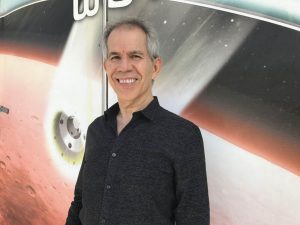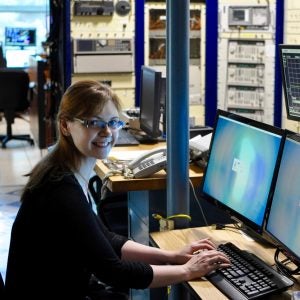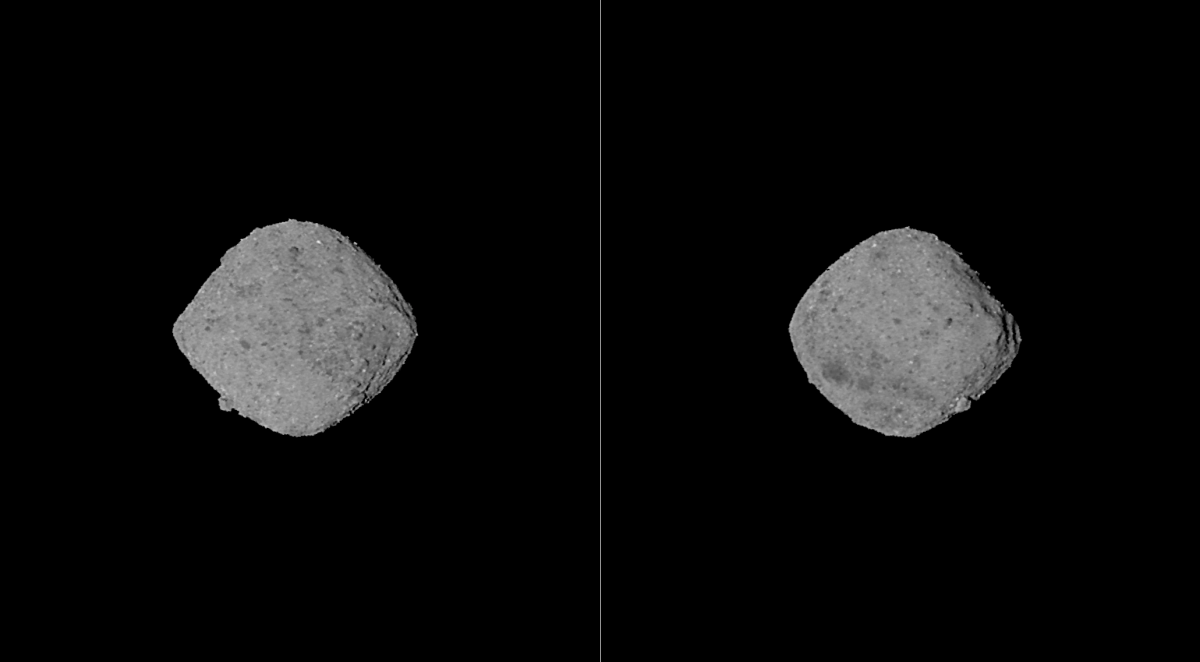The holidays came early for the science team leading NASA’s OSIRIS-REx mission to collect samples from a near-Earth asteroid. Today they announced findings from the mission thus far, which arrived at asteroid Bennu Dec. 3
Scientists were already buzzing with excitement in November when the spacecraft’s long-range cameras began beaming early images of the asteroid. Now, the first few close ups confirm the buzz.
“The images are spectacular and spot on … it is pretty amazing to actually see [the Bennu asteroid] now.” – Humberto Campins, UCF professor
“We’re very excited,” says Humberto Campins, a University of Central Florida planetary scientist, professor of physics and member of the OSIRIS-REx Science Team. He and UCF Associate Professor Yan Fernandez are part of the team that will analyze close range images of the asteroid to recommend the best spot to collect the sample. “The images are spectacular and spot on, what we expected thanks to predictions made with the instrumentation at the Arecibo Observatory in the late 90s and early 2000s. We will spend a year and a half mapping Bennu and have to wait until mid 2020 we collect the sample, but it is pretty amazing to actually see it now. Christmas came early.”

The mission’s lead scientists from the University of Arizona and other institutions presented initial results about the asteroid and the mission at the AGU conference in Washington D.C. today. The AGU is the largest worldwide conference in Earth and space sciences and was expected to host more than 20,000 attendees this year, including representatives from the Arecibo Observatory.
“The amazing Bennu images coming out now look strikingly similar to the shape model derived from Arecibo radar data in 2013,” says Anne Virkki, a research scientist at observatory in Puerto Rico.
Bennu was discovered in 1999, and shortly after, Arecibo’s radar and the Goldstone planetary radar system were used to examine it. In 2005 Arecibo was used to complete a second set of radar observations. In 2013, a team of scientists led by Michael Nolan (who now works for the OSIRIS-REx mission as asteroid scientist and science team chief), published Bennu’s shape model and pole orientation, based on the radar data from 1999 and 2005. The Arecibo radar team also predicted Bennu’s size and rotation period and the team detected a distinctive boulder on the asteroid’s surface.
OSIRIS-REx launched from the Space Coast in 2016. The early images from OSIRIS-REx dramatically confirm that those predictions were accurate, scientists say.
“No other ground-based method is capable of detecting such features,” Virkki says from the facility.

Arecibo director Francisco Cordova, who attended the conference, was thrilled to see another example of the facility helping advance space science.
“This only demonstrates what everyone at Arecibo already knows,” Cordova says. “Our facility is a tremendous resource to the world, which continues to contribute to important discoveries, across multiple science communities. The best is yet to come for the observatory, which will be receiving significant upgrades over the next four years including new receivers, feeds and transmission capabilities.”
Campins agrees. He says the work done at Arecibo was invaluable in NASA’s selection of the OSIRIS-REx project for full funding when it was competing with a dozen other proposals in NASA’s New Frontiers Program.
UCF operates the Arecibo Observatory in partnership with Sistema Ana G. Mendez Universidad Metropolitana and Yang Enterprises Inc., under a cooperative agreement with the National Science Foundation. The planetary radar program is supported by NASA’s Near Earth Object Observation Program.
“The information obtained from radar characterization of this asteroid at Arecibo was critical in mission target selection and supported OSIRIS-REx science definition and mission planning,” Campins says. “Arecibo’s radar data gave us two main advantages. It minimized the uncertainty in the shape of the asteroid and its orbit, which help reduce risk and increase the likelihood of a successful mission.”







